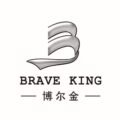
In the world of creative manufacturing, the combination of 3D printing and laser engraving is changing the way people make personalized products. For example, when you want to give a friend a unique gift for his birthday, choosing these technologies is a great solution. You can first use a 3D printer to make a small ornament, such as your friend’s favorite movie character, and then use a laser engraver to engrave personalized text and dates on the base. 3D printing provides unlimited possibilities for shapes, while laser engraving gives it delicate details and unique personalized logos. The charm of this combination of technologies is that it not only breaks the limitations of traditional manufacturing, but also makes each gift full of stories and meanings, becoming a vivid example of innovative manufacturing.
3D printing and laser engraving: perfect combination from shape to details
- The core capabilities of 3D printing and laser engraving are reflected in the two fields of structural manufacturing and surface processing respectively. 3D printing is based on “additive manufacturing”, which can add materials layer by layer to form complex three-dimensional shapes. Its advantage is that it is highly flexible and can be quickly prototyped without the need for molds. It is especially suitable for the production of prototype samples and small batch customization. product. Laser engraving uses high-energy laser beams to accurately depict surfaces, enabling high-resolution processing of details and is especially good at processing text, patterns and textures.
- There are also significant differences in material selection between the two: 3D printing usually uses materials such as plastics, metal powders and resins, while laser engraving prefers to deal with hard materials such as metal, wood and glass. Their combination complements each other in terms of precision and efficiency. 3D printing is responsible for building the overall form, while laser engraving injects fine personalized details into it, making the process from design to finished product more complete and efficient.

Equipment Optimization Strategy Behind Technology Collaboration
- When combining 3D printing with laser engraving, equipment matching and compatibility are key. Generally, there are significant differences in hardware structure and operating logic between 3D printers and laser engraving machines. One focuses on mechanical precision, while the other emphasizes the accuracy of the laser path. If efficient synergy between the two technologies is to be achieved, equipment manufacturers need to carry out in-depth integration during the design stage. For example, some multi-functional equipment is equipped with replaceable working modules, so users can easily switch between 3D printing heads and laser engraving heads, while using a unified operating platform to complete the entire workflow.
- In addition, this type of equipment also optimizes the workspace design, combining the printing and engraving areas into one, reducing the floor space required for multi-device configurations. These optimizations not only improve operational convenience, but also significantly lower the threshold for creative manufacturing.
An engine of technological innovation for industry, creativity and education
- Industrial manufacturing: a powerful tool for multifunctional production
In the manufacturing industry, the combination of 3D printing and laser engraving solves multiple needs from construction to marking. For example, factories can use 3D printing technology to produce complex tool molds, while laser engraving can accurately mark instructions or serial numbers on these molds. Especially in high-precision fields such as aviation and medical devices, the combination of these two technologies not only improves the quality of parts, but also improves production efficiency, providing technical support for high-demand industry standards. - Personalization: Creating a unique experience for customers
In the field of personalized customization, the combination of these two technologies maximizes the release of creativity. From 3D-printed three-dimensional ornaments to laser-engraved exclusive text, each product can bring users their own emotional memories. For example, a custom gift studio can print a unique photo frame for customers, and then use laser engraving to engrave blessings or dates to inject warm emotions into it. This creative combination is becoming an attractive business model in the market. - Education and creative design: a practical tool to ignite inspiration
In the field of education, 3D printing and laser engraving provide new tools for creative design courses. Students can complete an assembly model of a complex mechanical component through 3D printing, and then use laser engraving to add functional labels or visual effects to it. This hands-on experience not only enhances students’ interest in learning, but also exposes them to cutting-edge manufacturing technology and cultivates interdisciplinary innovative thinking ability.
From basics to professionalism, explore your creative potential
With the continuous advancement of technology, the integration of 3D printing and laser engraving equipment is penetrating into more fields. In the future, you can try to add a full-color printing module to help the work achieve more realistic color presentation, such as using it in educational models and high-end artworks to attract a wider user group. On the other hand, exploring the potential of metal engraving, especially in the fields of luxury goods and industrial manufacturing, can greatly increase the added value of the business. From custom jewelry to high-end mechanical nameplates, metal engraving can show strong market demand. For small entrepreneurs, choosing feature-rich equipment or seeking a rental sharing model are both feasible paths to reduce initial costs and gradually upgrade technology. Only by constantly improving the technology combination can you stand out from the competition.


